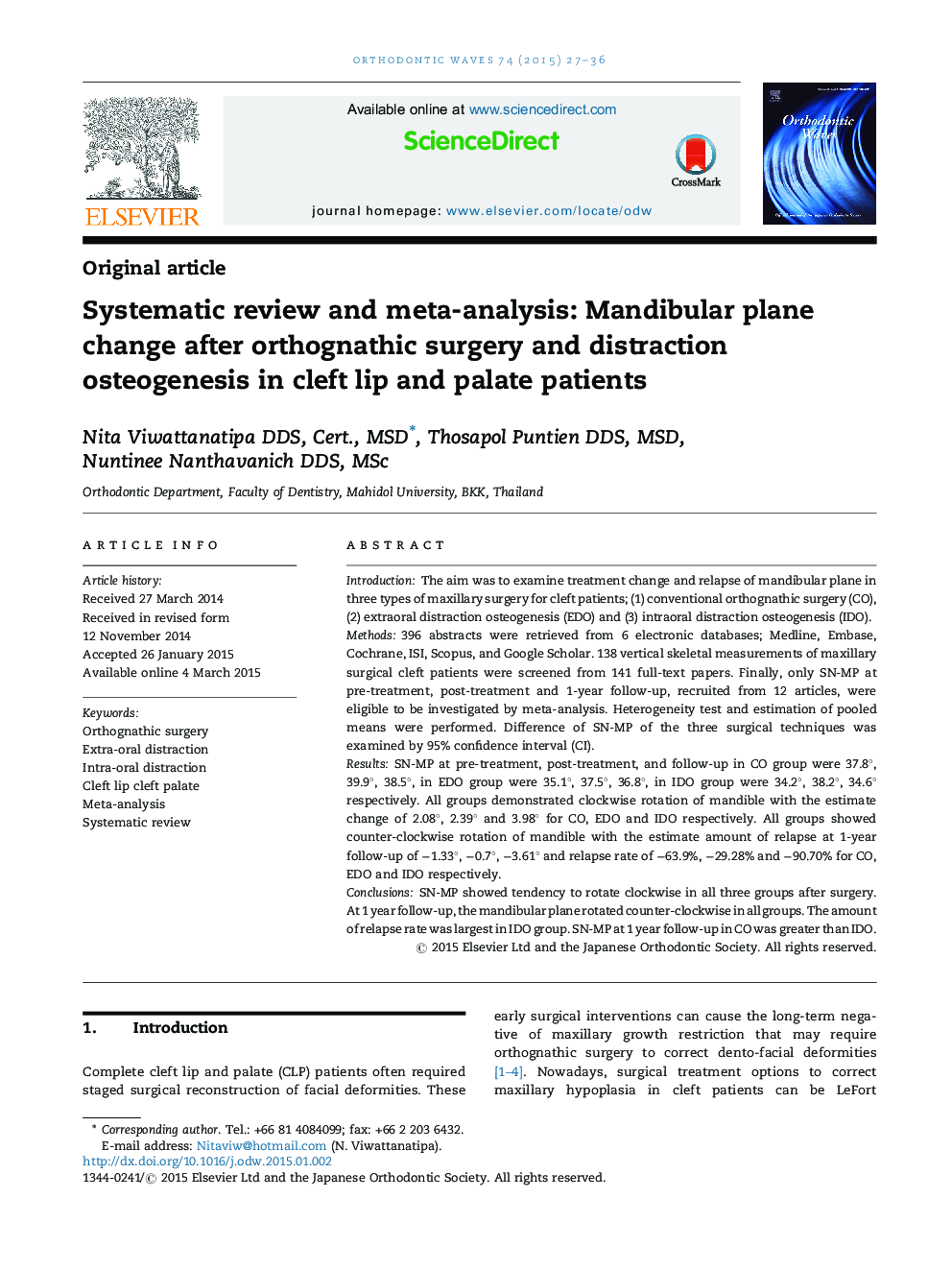| Article ID | Journal | Published Year | Pages | File Type |
|---|---|---|---|---|
| 3170275 | Orthodontic Waves | 2015 | 10 Pages |
IntroductionThe aim was to examine treatment change and relapse of mandibular plane in three types of maxillary surgery for cleft patients; (1) conventional orthognathic surgery (CO), (2) extraoral distraction osteogenesis (EDO) and (3) intraoral distraction osteogenesis (IDO).Methods396 abstracts were retrieved from 6 electronic databases; Medline, Embase, Cochrane, ISI, Scopus, and Google Scholar. 138 vertical skeletal measurements of maxillary surgical cleft patients were screened from 141 full-text papers. Finally, only SN-MP at pre-treatment, post-treatment and 1-year follow-up, recruited from 12 articles, were eligible to be investigated by meta-analysis. Heterogeneity test and estimation of pooled means were performed. Difference of SN-MP of the three surgical techniques was examined by 95% confidence interval (CI).ResultsSN-MP at pre-treatment, post-treatment, and follow-up in CO group were 37.8°, 39.9°, 38.5°, in EDO group were 35.1°, 37.5°, 36.8°, in IDO group were 34.2°, 38.2°, 34.6° respectively. All groups demonstrated clockwise rotation of mandible with the estimate change of 2.08°, 2.39° and 3.98° for CO, EDO and IDO respectively. All groups showed counter-clockwise rotation of mandible with the estimate amount of relapse at 1-year follow-up of −1.33°, −0.7°, −3.61° and relapse rate of −63.9%, −29.28% and −90.70% for CO, EDO and IDO respectively.ConclusionsSN-MP showed tendency to rotate clockwise in all three groups after surgery. At 1 year follow-up, the mandibular plane rotated counter-clockwise in all groups. The amount of relapse rate was largest in IDO group. SN-MP at 1 year follow-up in CO was greater than IDO.
